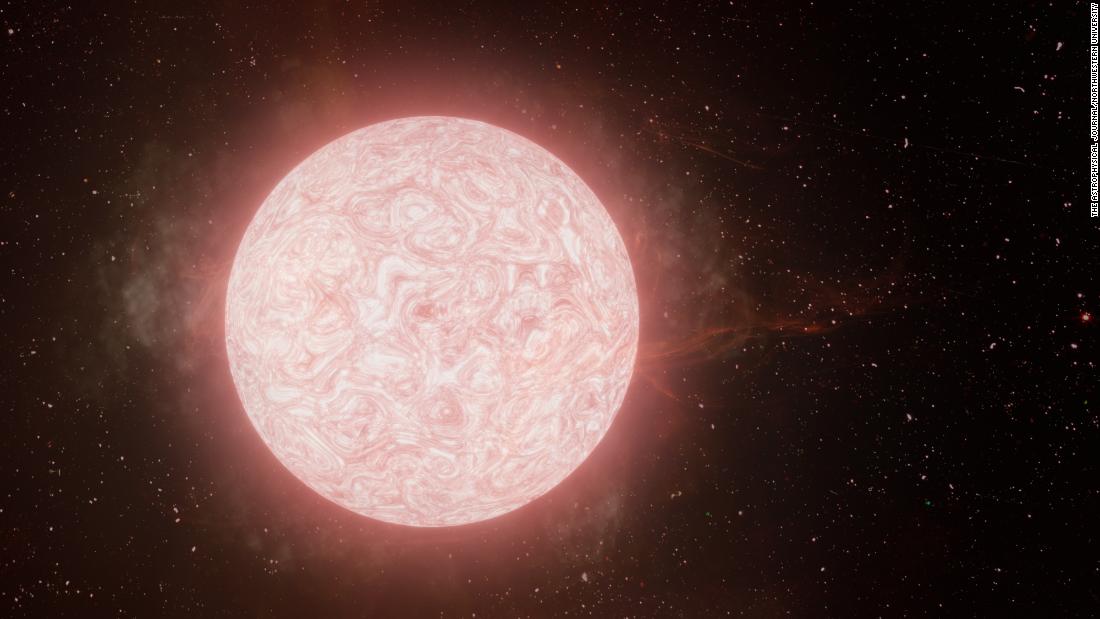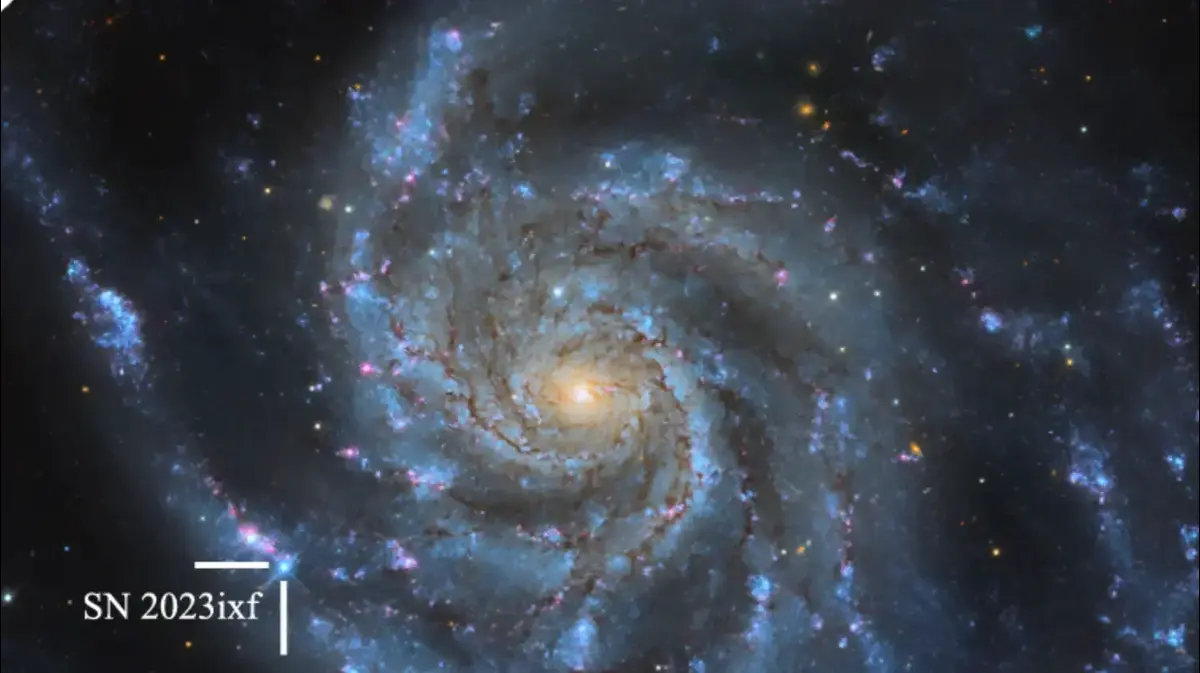The astronomical events that you cannot miss in 2022 1:03
(CNN) -
The death of a star is one of the most dramatic and violent events in space, and astronomers have had an unprecedented front-row seat to the explosive end of a stellar giant.
Ground-based telescopes provided the first real-time (ground-based) look at the death throes of a red supergiant star.
While these are not the brightest or most massive stars, they are the largest in terms of volume.
A popular red supergiant star is Betelgeuse, which attracted interest due to its irregular dimming.
This star, located in the galaxy NGC 5731 about 120 million light years distant from Earth, was 10 times larger than the sun.
Before they fade into a blaze of glory, some stars experience violent eruptions or release bright hot layers of gas.
Until astronomers witnessed this event, they believed that red supergiants were relatively quiet before exploding in a supernova or collapsing into a dense neutron star.
Alexa, from Amazon, is NASA's new virtual astronaut 0:58
Instead, the scientists watched the star self-destruct in dramatic fashion before collapsing into a type II supernova.
The death of this star is the rapid collapse and violent explosion of a massive star after burning hydrogen, helium, and other elements in its core.
advertising
All that is left is the iron from the star, but iron cannot be fused, so the star will run out of energy.
When that happens, the iron collapses and causes the supernova.
A study detailing these findings published Thursday in The Astrophysical Journal.
"This is a major advance in our understanding of what massive stars do just before they die," lead study author Wynn Jacobson-Galán, a graduate researcher at the University of California National Science Foundation, said in a statement. , Berkeley.
"Direct detection of pre-supernova activity in a red supergiant star has never been observed before in an ordinary type II supernova. For the first time, we saw a red supergiant star explode."
The final moments of stellar death
Astronomers were first alerted to the star's unusual activity 130 days before it went supernova.
In the summer of 2020, the Pan-STARRS telescope at the University of Hawaii Institute of Astronomy detected bright radiation at Maui's Haleakalā.
Then in the fall of that year, the researchers witnessed a supernova at the same location.
They observed it using the WM, a low-resolution imaging spectrometer at the Keck Observatory in Maunakea, Hawai'i, and named it supernova 2020tlf.
Their observations revealed that there was material around the star when it exploded, the bright gas that the star violently kicked away from itself during the summer.
"It's like seeing a time bomb," study lead author Raffaella Margutti, an associate professor of astronomy and astrophysics at UC Berkeley, said in a statement.
"We have never confirmed such violent activity in a dying red supergiant star where we see it produce such a luminous emission, then collapse and burn, until now."
Space in 2021: Mars, black holes and exoplanets 3:51
Some of these massive stars likely undergo consequential internal changes that cause the tumultuous release of gas before dying, the finding has shown.
The work was carried out while Jacobson-Galán and Margutti were still at Northwestern University.
They had remote access to the telescopes at the Keck Observatory in Hawaii, which was "critical in providing direct evidence of a massive star transitioning into a supernova explosion," Margutti said.
"I am very excited about all the new 'unknowns' that have been unlocked by this discovery," said Jacobson-Galán.
"The detection of more events like SN 2020tlf will have a dramatic impact on how we define the final months of stellar evolution, uniting observers and theorists in the quest to solve the mystery of how massive stars spend the final moments of their lives. lives ".



/cloudfront-eu-central-1.images.arcpublishing.com/prisa/TQ73US57UFGWTIXR7C3BS2OTIA.jpg)







